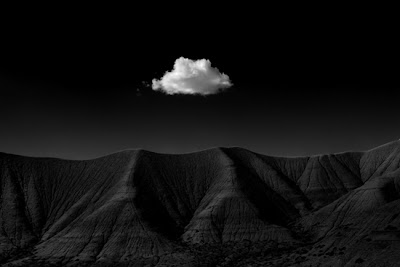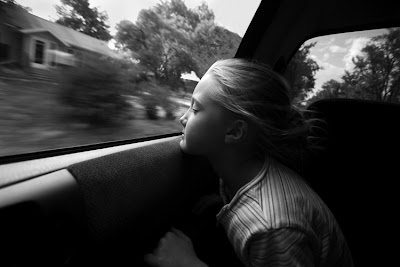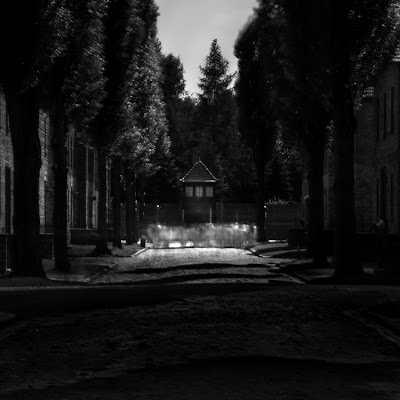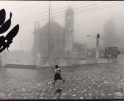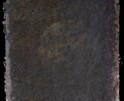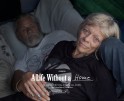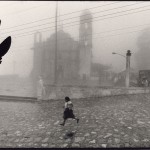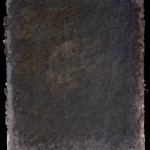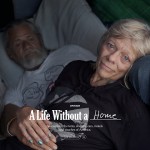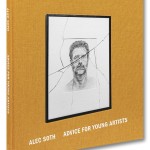Success Stories: Cole Thompson
Cole Thompson’s work has been on my radar for a number of years. I have always appreciated his well-crafted images and all that he brings to the table in terms of being a professional. His newsletters are as elegant as his work, and everything is presented with grace. I was thrilled to meet him in Colorado at the Center for Fine Art Photography, when we both sat on a panel hosted by Hamidah Glasgow. It was during that panel session that I discovered his unique approach to marketing and sales and thought it a good subject to explore on Lenscratch.
As part of Cole’s approach, he has let go of his long and accomplished resume, his bio filled with achievements in and out of photography, and his need to garner gallery representation. Instead, he prefers to let the work speak and sell for itself. What I do know for sure, is that he lives in Colorado, is deeply committed to his craft, and is a person I am glad to have in my orbit. He also writes a wonderful blog, Photography Black White.
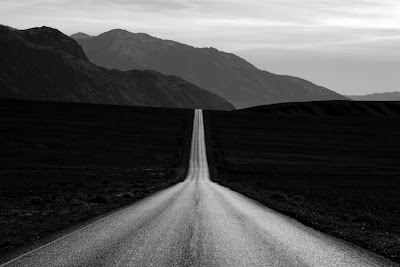
Road to Nowhere – Death Valley, CA – 2011
INTERVIEW
It was great to finally meet you in person at the Center for Fine Art Photography in Colorado. I found it so interesting to learn more about your unique perspective about marketing and selling your work. I’d like to quote from your resume page:
My art has appeared in hundreds of exhibitions, numerous publications and has received many awards. And yet my resume does not list those accomplishments, why?
In the past I’ve considered those accolades as the evidence of my success, but I now think differently. My success is no longer measured by the length of my resume, but rather by how I feel about the art that I create. While I do enjoy exhibiting, seeing my work published and meeting people who appreciate my art, this is an extra benefit of creating, but this is not success itself.
I believe that the best success is achieved internally, not externally.
Can you expand on coming to these perspectives?
First let me thank you Aline, for how kind and giving you’ve always been to me. Your generosity is something I have always respected and I appreciate this opportunity you’ve given me today.
For much of my photographic life I pursued success without ever stopping to ask what success meant to me. I simply accepted society’s definition which generally included things such as being published, gallery representation and selling your work for high prices.
But as I began to achieve those things I found that the euphoria was temporary and I was left with an empty feeling,. Yes, it was nice to hear the accolades, but in the morning it was still just me, my art and my opinion of my art. I began to realize that it didn’t matter what others thought of my work, that in the end my opinion was the only one that really mattered.
I began to question things; how do I as an artist gauge my self worth? Do I base it on sales, reviews of my work, the galleries I’m in, the price tag on my art or the awards I receive? Are external accolades my success or is success measured against an internal standard?
External success is a fickle mistress; she may love you one day and not even know you exist another. You’ll never really know her, for her standards frequently change and she’s always looking for her next new lover. To measure success by her standards can lead to an insecure existence and frustration as you try to win her affection by creating work that you hope will please her. Please do not misunderstand, I do enjoy showing my work, exhibiting it and I do gain pleasure when others like it. But these are not the reasons why I create and those things are not necessary for me to feel good about my work or myself.

The Fountainhead No. 70 – 2010
My portfolio “The Fountainhead” is an example of achieving internal success. This is a series named after the novel of the same name and it is a significant to me because architecture was one of my first loves and because I admire the novel’s theme; achieving success on one’s own terms. This series was an excellent test of my philosophy because these images have not been well received, widely published. And yet still, I consider the project a success because of how “I” feel about them.
I was reading about how the movie “The Beaver” with Mel Gibson and director Jodie Foster failed miserably at the box office. The article talked about Jodi Foster’s belief in the film’s message, and when asked about the financial disaster said:
“I’ve learned … that if you gauge your self-worth at the box office, you will be a very sorry person. “
That is also true about art; success should be measured from within and then the external accolades are like a cherry on top of a very nice dessert.
The photograph on your website that you took at age 14 is quite remarkable. How did you know at such a young age that you wanted to be a fine art photographer?
It sounds so pretentious to say it out loud, but at 14 years of age I knew that I was destined to be a photographer.
I was living in Rochester, NY where one day I was out hiking and stumbled upon the ruins of an old home owned by George Eastman. This so piqued my interest that I read his biography, and before I had finished the book, before I had even taken a photograph or entered a darkroom, I knew that my calling was to be a photographer. For the next ten years my life was entirely consumed with photography; I read about it, studied the images of the great masters and taught myself how to photograph and work in the darkroom.
When I look back at the images I created at that very young age, I think see a glimmer of creativity and originality.
I recently restored this image from a single print that had survived the many years since I was 16 years old. Seeing this image brings back my earliest feelings about photography. Those were simple times when it just about me and my images, with none of the other “baggage” that one collects along the way in life. Just the pure joy of simple creation and self-satisfaction.
That to me is the essence of photography and art. Just you and your vision and creating images for yourself, it’s a wonderfully free feeling!
You’ve been pursuing photography for over 40 years, which gives you an amazing viewpoint on photography today. Has shooting digitally changed how your shoot? What changes have you seen for the better and for the worse?
I love the perspective that age and experience has given me, it’s one of the great things about getting older. I grew up in the darkroom and had such great times with all of those old processes, but I love digital because of how it frees me.
To me cameras and processes are simply tools that help me to create, and even though I have some wonderful memories of those old days, I have no desire to stick with a technology simply because of my nostalgic feelings for it. Tools are a means to an end and not the end itself, and I seek to use the best tools that are available to me. I love digital because it allows me to do things that I could not have done with film and because it allows me to focus more on the creative process.
For example I don’t believe I could have created my long exposure series “The Ghosts of Auschwitz-Birkenau” with film equipment. In fact much of my current long exposure work would have been difficult if not impossible, to create with those old tools.
Bottom line, I find digital to be more convenient, more capable and most importantly it allows me to focus more on the creative process and less on the technical. I like digital because it has improved my work.
Even though you work exclusively in black and white, you still manage to keep your work contemporary and explore lots of photographic ideas. After 40 years, are you drawn to similar subjects and terrain or looking to explore new territories?
This is the second time you’ve brought up my “40 years” of experience Aline, exactly what are you insinuating?
My heart always hearkens back to its roots which are black and white images in the tradition of Ansel Adams, Edward Weston, Wynn Bullock, Paul Caponigro and the other great masters of photography. But even though my heart goes there, I rarely create there anymore. Instead I go to new places and enjoy a variety of subjects and techniques. Just this week I ran across this Edward Weston quote which sums up my feelings exactly:
Anything that excites me, for any reason, I will photograph: not searching for unusual subject matter, but making the commonplace unusual, nor indulging in extraordinary technique to attract attention. Edward Weston
One of the great things about finding your own vision is that you can create unique images from common subject matter. Even though everything’s been photographed before, it’s not been photographed with “your” vision.

Ceiling Lamp, Mourning Dove Ranch
For example my series on Ceiling Lamps is my unique look at a very common object. I was standing in a hotel lobby in Akron, OH when I looked up and saw an incredible ceiling lamp, what was incredible about it was how differently it looked when you stood directly beneath it. I soon had the furniture pushed out of the way and was lying on the lobby floor to study it (twice people approached me and offered to call 911). It was a series that came about by sheer luck and sudden inspiration, and it was the start of a series that took me on many adventures.
For so long people had advised me to focus on just one subject and become known for that. I never cared for that advice and finally developed the self-confidence to say “No!” I love photographing a variety of subjects and with different styles. While my subject matter varies greatly, I hope my vision that is the common thread that binds them all together.
Another very different series is “Linnie, A Portrait of Breast Cancer.” Ironically this was a project I tried very hard to get out of because I typically don’t photograph people and this was a subject that I was uncomfortable with. But I’m so glad that Linnie wouldn’t take no for an answer because it turned out to be a touching experience and I made a friend for life.
I love working with vastly different subject matter, not seeking out different just to be different, but I love the variety and challenge of trying new things. If I ever become known for anything, I want to be remembered as the photographer with a wide range of portfolios.
You consistently approach everything you do with the utmost professionalism. What can you share with emerging photographers about how you present yourself and your work to the world?
Thank you Aline, this compliment took me by surprise because it’s a quality that I didn’t appreciate about myself. I do try to live by certain principles and I hope that’s what shows through. Some of those principles are:
1. Be honest and trust others. There is nothing more important to me than my word and reputation, and I always assume others will act in the same way.
2. Simple is always better. I appreciate simplicity in everything I do including my images, my website and my words.
3. Do things right. Little things do matter and being precise and accurate is important to how I present myself.
4. Be proud of your work. If I am not proud of my work, then I cannot expect others to value or appreciate it.
5. Develop personal relationships. I believe in making friends of customers and customers of friends.
6. Be a good person. This is the basis for being a good artist and being successful.
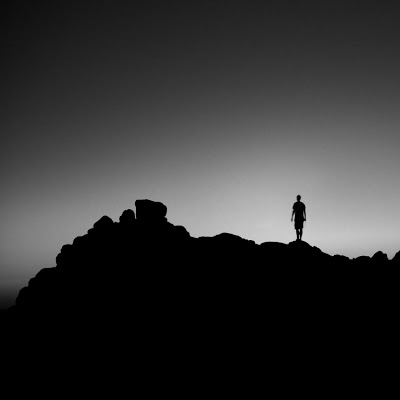
Lone Man No. 7, Oregon Beaches
What took your work to the next level?
Several years ago I was attending Review Santa Fe and the last reviewer of the day quickly looked at my work, shoved it back towards me and said “It looks like you’re trying to copy Ansel Adams.” I responded that I was, that I loved Ansel Adams’ style and that I sought to create work like his. He then said something so profound that it would change my life, he said:
“Ansel’s already done Ansel and you’re not going to do him any better. Find your own vision.”
It was a hard thing to hear at the time, but over the course of the next year I came to understand exactly what he meant. Was my goal to really become the world’s best Ansel Adams imitator? Didn’t I want to create something original of my own?
It was then that I vowed to find my own vision, but did I have one? I grew up believing that I lacked creativity and so I compensated for this by becoming very good at the technical side of photography and imitating the look of others. Finding my vision over the next several years turned out to be one of the most difficult things I’d ever done in my life, but it was worth it because it changed my life.
The most important technique that I used to assist me on this journey was to stop looking at other photographer’s work. I found that when I’d look at other’s art, I’d want to run out and imitate their style and even that exact image. Sometimes it was done consciously but often it was done unconsciously.
I knew that I couldn’t just erase those images from my memory, but I wanted to minimize their influence so that I could see a subject as freshly and originally as possible. I wanted to be like a blind man who gained his sight for the very first time; how would I see things?
And so for the last several years I have practiced what I call “Photographic Celibacy.” My photo magazines are donated, my books gather dust on the shelf and I do not seek out new work on the internet. Not studying other photographers work has been very helpful and I give this technique much of the credit in helping me unearth my vision and to become more creative.
I do not argue this is the right approach for everyone, but it has worked for me and a recent experience reinforced the practice. I happened to see this wonderful image of three telephone poles entitled “Three Crosses” by Brian Kosoff and I immediately wanted to go out and find telephone poles that I could photograph in a similar arrangement! I caught myself and realized that I still have this natural tendency to want to imitate when I see a great image.
So for now I’ll I continue my Photographic Celibacy as I seek to further develop my vision and to see uniquely. I suspect that one day I’ll abandon this practice and once again enjoy the beautiful work that others are creating.

Harbinger No. 10 – White Sands, NM
How have you gotten your work out into the world and how do you find your buyers?
Initially I followed the traditional route and entered juried competitions to build my resume as a prerequisite to seeking gallery representation. But I never did approach galleries because I felt that a new paradigm was emerging, one that was diminishing the traditional role of the art gallery. I do not yet know exactly what that new paradigm will eventually look like, but clearly the internet will play a larger role and the gallery a smaller one.
So given that, I set out to sell my art directly via my website and have been focusing on SEO (search engine optimization) to bring traffic to my site via internet searches. I still do purchase some print advertising but have found that it, like the gallery, is a part of the old system.
Selling art direct via the internet presents many new challenges that must be understood and addressed. For example the internet has exposed thousands of new photographers from around the world, all competing for the buyer’s attention. Another challenge is how to sell art that the customer cannot see directly and can only view on a computer monitor? Something else I’m finding is that younger people who grow up on the internet do not seem to purchase prints as much as previous generations, but are content to enjoy them online. Books and prints are less important in this new internet age.
The internet is the new frontier when it comes to selling art and new techniques will need to be developed to address these emerging issues.

The Angel Gabriel – Newport Beach, CA
You write a well-read blog about your photographic life. Has the feedback and community enriched your experience, and do you ever regret giving away your knowledge?
I initially started writing my blog to improve my SEO and to drive traffic to my website by offering something of value. But what I’ve come to appreciate is how useful it is in sorting out my own thoughts and to learn from the ideas of others.
Do I regret giving away my secrets? Never, because how I photograph and process an image is not the key to its success! Vision is the key and I couldn’t give that away if I wanted to. So while I do share my technical knowledge, I stress that the real key is to find your own vision. Technical knowledge without direction is a waste.
I mentioned that in my past life I was very focused on the technical, to the point that gadgets and processes were almost more important to me than the image! In the last several years I’ve made the transformation from photographer to artist and have purposely pushed my technical pendulum way over to the other side. I now value simplicity in my seeing, photographing and processing.
When I show people how I create something using Photoshop, I let them know that I’m generally only using six tools out of the many hundreds offered. I want to make the point that great images are not dependent on complex processes, but can be created with the simplest of procedures.

Swimming Towards the Light – Kihei, Hawaii
Do you have a favorite series?
Picking a favorite series is like picking a favorite child, and so I’d have to say that I have several favorites. I am very proud of “The Ghosts of Auschwitz-Birkenau” because it was an original idea and borne out of spontaneous inspiration. I am also very attached to “The Fountainhead” for what it represents and how incredibly fun it was to create the series.
If I could pick just one more favorite, it would have to be “Harbinger.”
This is a series that features a solitary cloud in each image. The above image was the first in the series and this will be a very long term project due to the difficulty in finding great clouds in great locations.
What are you currently working on?
I’m in-between projects! I recently finished “The Fountainhead” and I have not yet found the inspiration to start something new. I have a list of ideas but in truth the only ones that have ever worked out are the unplanned, sudden inspiration ideas.
So while I have many ideas, I do not yet have the inspiration to pursue them.
That used to bother me, these periods of down time without inspiration, but not any longer. Now I see those down times as a part of the creative process, perhaps like a farmer letting a field lay fallow for a season to rejuvenate it. I’ve also learned that inspiration cannot be rushed; to try is ineffective and frustrating.
And finally, what would be your perfect day?
Well Aline, with my “40 years” of experience, I’d answer this question much differently than I would have when I was younger! Strangely enough the perfect day may not involve photography at all. Despite how much I love photography, I do not love it more than my family or my life. Photography is not my life, but it is one of those special things that help me to enjoy life.
A perfect day would be spent with my family and new grandson at La Jolla Cove in San Diego. We would walk the beach in the morning, then enjoy two dives in the ecological reserve and then have a picnic lunch on the grass overlooking the Cove. Then I would slip away and go do some long exposure work while relishing the warmth of the sun, appreciating the sounds and smells of the ocean and being grateful that I could enjoy it all. And oh yes, we’d have Mexican for dinner!
Posts on Lenscratch may not be reproduced without the permission of the Lenscratch staff and the photographer.
Recommended
-
Suzanne Theodora White in Conversation with Frazier KingSeptember 10th, 2025
-
Maarten Schilt, co-founder of Schilt Publishing & Gallery (Amsterdam) in conversation with visual artist DM WitmanSeptember 2nd, 2025
-
BEYOND THE PHOTOGRAPH: Q&A WITH PHOTO EDITOR JESSIE WENDER, THE NEW YORK TIMESAugust 22nd, 2025
-
Beyond the Photograph: Editorial Q&A with Photographer Tamara ReynoldsJuly 30th, 2025







